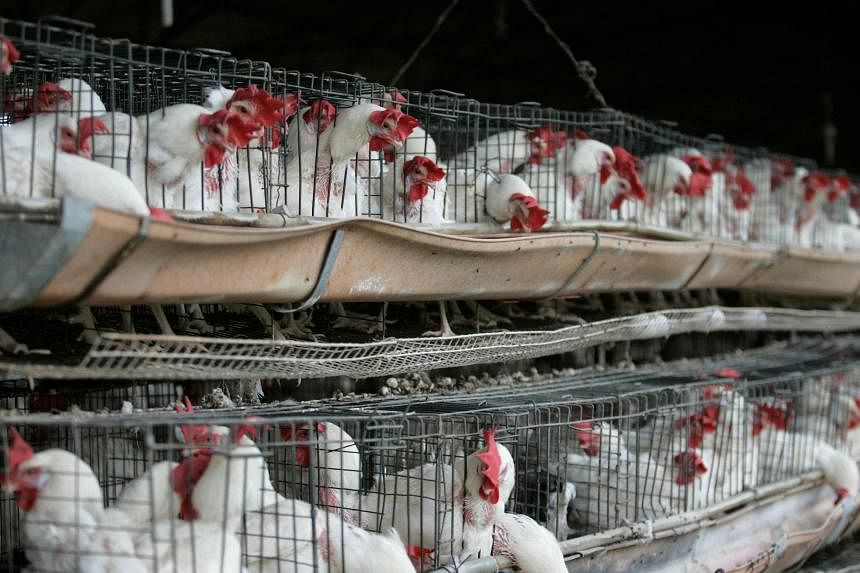CHICAGO – Scientists have used the gene-editing technology known as Crispr to create chickens that have some resistance to avian influenza, according to a new study published in the journal Nature Communications on Tuesday.
The study suggests that genetic engineering could potentially be one tool for reducing the toll of bird flu, a group of viruses that pose grave dangers to both animals and humans. But the study also highlights the limitations and potential risks of the approach, scientists said.
Some breakthrough infections still occurred, especially when gene-edited chickens were exposed to very high doses of the virus, the researchers found.
And when the scientists edited just one chicken gene, the virus quickly adapted.
The findings suggest that creating flu-resistant chickens will require editing multiple genes, and that scientists will need to proceed carefully to avoid driving further evolution of the virus, the study’s authors said.
The research is “proof of concept that we can move towards making chickens resistant to the virus”, Professor Wendy Barclay, a virus expert at Imperial College London and an author of the study, said at a news briefing. “But we’re not there yet.”
Some scientists who were not involved in the research had a different takeaway.
“It is an excellent study,” said Dr Carol Cardona, an expert on bird flu and avian health at the University of Minnesota.
But to Dr Cardona, the results illustrate how difficult it will be to engineer a chicken that can stay a step ahead of the flu, a virus known for its ability to evolve swiftly.
“There is no such thing as an easy button for influenza,” she said. “It replicates quickly, and it adapts quickly.”
Avian influenza refers to a group of flu viruses that are adapted to spread in birds.
Over the past several years, a highly lethal version of a bird flu virus known as H5N1 has spread rapidly around the world, killing countless farmed and wild birds.
It has also repeatedly infected wild mammals and been detected in a small number of people.
Although the virus remains adapted to birds, scientists worry it could acquire mutations that help it spread more easily among humans, potentially setting off a pandemic.
Many nations have tried to stamp out the virus by increasing biosecurity on farms, quarantining contaminated premises and culling infected flocks.
But the virus has become so widespread in wild birds that it has proved impossible to contain, and some nations have begun vaccinating poultry, although that endeavour presents some logistic and economic challenges.
If scientists could engineer resistance into chickens, farmers would not need to routinely vaccinate new batches of birds.
Gene editing “promises a new way to make permanent changes in the disease resistance of an animal”, Dr Mike McGrew, an embryologist at the University of Edinburgh’s Roslin Institute and an author of the new study, said at the briefing.
“This can be passed down through all the gene-edited animals, to all the offspring.”
Crispr, the technology used in the study, is a molecular tool that allows scientists to make targeted edits in DNA, changing the genetic code at a precise point in the genome.
In the new study, the researchers used this approach to tweak a chicken gene that codes for a protein known as ANP32A, which the flu virus hijacks to copy itself. The tweaks were designed to prevent the virus from binding to the protein – and therefore keep it from replicating inside chickens.
The edits did not appear to have negative health consequences for the chickens, the researchers said.
“We observed that they were healthy, and that the gene-edited hens also laid eggs normally,” said Dr Alewo Idoko-Akoh, who conducted the research as a postdoctoral researcher at the University of Edinburgh.
The researchers then sprayed a dose of flu virus into the nasal cavities of 10 chickens that had not been genetically edited, to serve as the control.
The researchers used a mild version of the virus, different from the one that has been causing major outbreaks in recent years. All of the control chickens were infected with the virus, which they then transmitted to other control chickens they were housed with.
When the researchers administered the flu virus directly into the nasal cavities of 10 gene-edited chickens, just one of the birds became infected. It had low levels of the virus and did not pass it on to other gene-edited birds.
When the scientists gave the gene-edited chickens a flu dose that was 1,000 times higher, half of the birds became infected. The researchers found, however, that they generally shed lower levels of the virus than control chickens exposed to the same high dose.
They then studied samples of the virus from the gene-edited birds that had been infected. These samples had several notable mutations, which appeared to allow the virus to use the edited ANP32A protein to replicate, they found.
Some of these mutations also helped the virus replicate better in human cells, although the researchers noted that those mutations in isolation would not be enough to create a virus that was well adapted to humans.
Seeing those mutations is not ideal said Dr Richard Webby, who is a bird flu expert at St Jude Children’s Research Hospital and was not involved in the research. “But when you get to the weeds of these particular changes, then it doesn’t concern me quite so much.”
The mutated flu virus was also able to replicate even in the complete absence of the ANP32A protein by using two other proteins in the same family, the researchers found.
When they created chicken cells that lacked all three of these proteins, the virus was not able to replicate. Those chicken cells were also resistant to the highly lethal version of H5N1 that has been spreading around the world for the past several years.
The researchers are now working to create chickens with edits in all three of the genes for the protein family. NYTIMES

